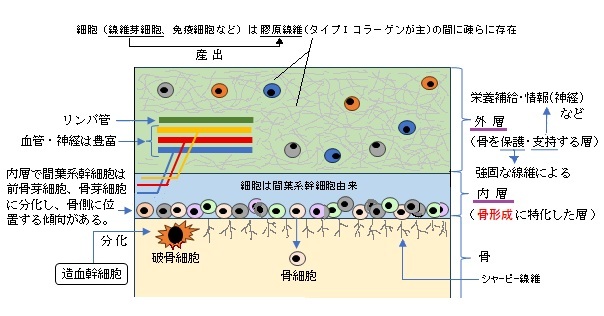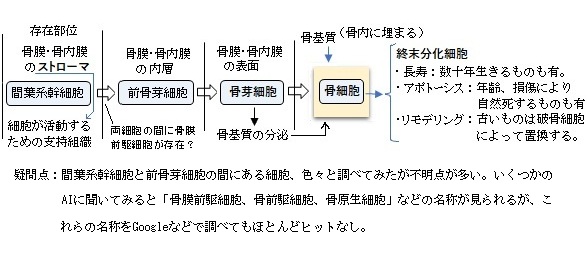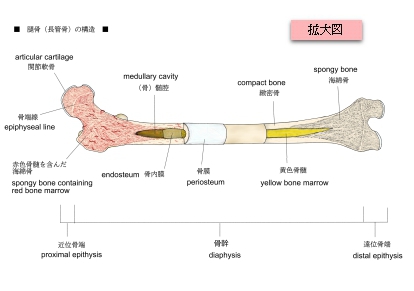骨 膜( こつまく、英:periosteum )
・概 要・構 造(外層、内層)・細胞成分・骨膜/骨内膜比較表
【概 要】
・骨膜と骨はシャーピー線維によって強固に結合されている。 【構 造】
■ 外 層(=線維層) ■ 1. 緻密な結合組織(タイプⅠコラーゲンが主)からできており、骨と筋・腱・靭帯をつなぐ 2. 血管や神経が豊富で、骨に栄養や感覚を供給する。 また、多くはないがリンパ管も見られる。 3. 感覚神経が多く、痛みの受容にも関わる。
■ 内 層 (=骨芽細胞層、成長層)■ 1. 骨芽細胞や骨細胞前駆細胞を含む。 2. 骨の成長(厚み方向の成長)や修復に関与 3. 骨折修復時にはここから新しい骨が作られる。
【細胞成分】
・内層の骨密度数十%に比べると、外層は10%程度かそれ以下と考えられる。
以下「ChatGPT」を参考にして作成した一覧表となる。


【骨膜/骨内膜比較表】 参考:「ChatGPT」
|











